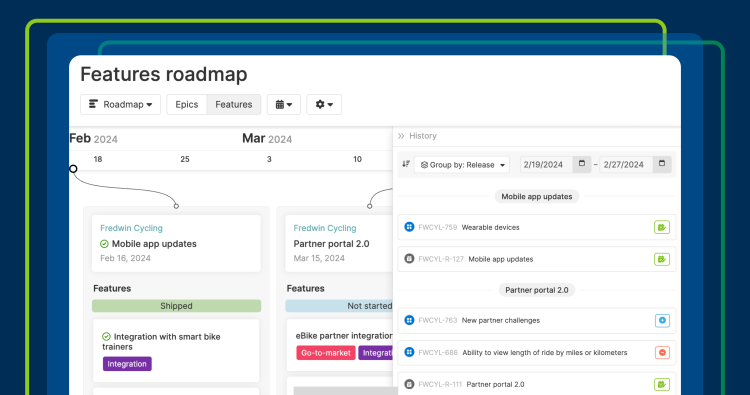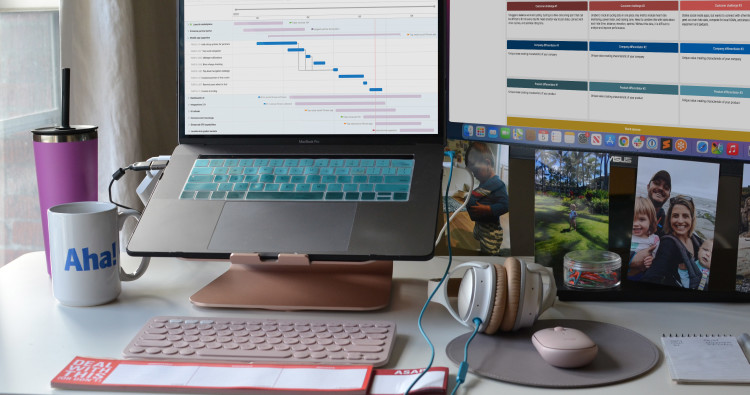
Features roadmap with a history panel in Aha! Roadmaps
Now, track changes to your roadmap
You are reviewing your product roadmap with stakeholders. Someone asks, "Has anything changed since we last met?" The answer is yes — but it has not always been easy to show it. Now, you can.
Starting today, you can view a history of changes made — such as scope and timing — on the features roadmap in Aha! Roadmaps.
Roadmaps in Aha! software have always been different. Rather than a static snapshot of product plans, each view leverages tangible product data. So teammates and stakeholders always see what is current, no manual updates needed.
But it can be helpful to discuss what has changed over time and why. With this, you can now access a history panel on the features roadmap. It provides a summary of any updates made to the scope or timing of releases, epics, and features. Here is how those changes are defined:
Scope changes refer to the addition or removal of features or epics within a release.
Timing changes appear anytime the date on a feature, epic, or release is altered.
You will find History tucked into the right side of your features roadmap. Expand this panel and choose whether to group updates by the type of change or by release. Then, zero in on the date range you want to view. From here, you can drill into the details of any change to understand exactly what happened, when it happened, and who initiated it.
Let's take a closer look:
Review what has changed
Let's say you are getting together with cross-functional teammates to review your features roadmap. The last time you met was earlier in the quarter, so folks are keen to get an update. First, you can share the progress of key features and upcoming releases. Next, you can reference the history panel to display what has changed and drill into details as questions arise.
History logs will appear for all records included in your roadmap view.
The best way to move forward? Understanding how you got here and letting those decisions guide what you do next.
We are thrilled to deliver this update, and it is just the beginning. Keep watching — the history panel will be added to more types of roadmaps very soon.
Sign up for a free trial of Aha! Roadmaps
Aha! Roadmaps is the best way to set strategy, prioritize features, and share visual plans. It includes Aha! Ideas Essentials for crowdsourcing feedback. If you are interested in an integrated product development approach, use Aha! Roadmaps and Aha! Develop together. Sign up for a free 30-day trial or join a live demo to see why more than 700,000 product builders trust our software to build lovable products and be happy doing it.




